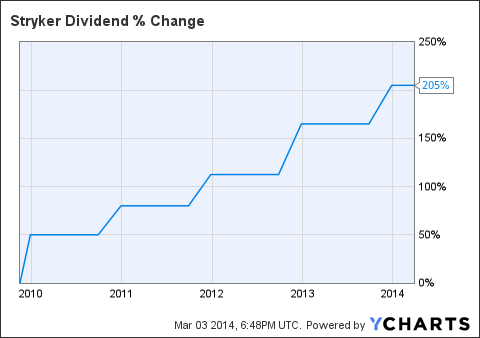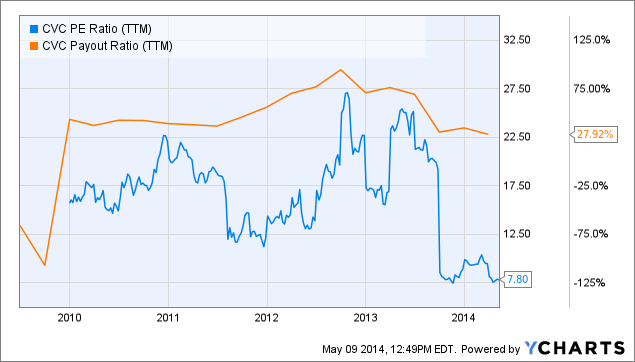A System For Picking The Best LongTerm Dividend Growers
Post on: 6 Июнь, 2015 No Comment

How to Pick the Best Dividend Growers
I formed my methodology for picking dividend growing stocks over a year ago and practically all of my own stock purchases since then have been based on it. This is the initial presentation of the system, and I intend to improve and enhance it, possibly incorporating suggestions from commenters, and repost if any changes are made. Also, I intend to post the updated list of stocks produced by the system on a monthly basis.
But first I would like to give credit and express my appreciation to David Fish, without whose efforts in creating and regularly updating his CCC List (spreadsheet) this article may not have been possible.
Countless books and articles have been written about how to pick winning stocks and countless strategies have been offered for doing so. Strategies are as diverse as growth investing, value investing, income investing, technical analysis investing, momentum investing, dividend investing, Graham investing, Buffet investing, Dogs of the Dow, GARP, CAN-SLIM, Magic formula, Call/Put options selling, etc. just to name a few. I have been playing the stock market for about twenty years and over the years searched for sure ways to beat the market. In my travails I jumped from strategy to strategy and at times made lots of money only to lose most of it during a following unexpected market event or trend. Seems to me most strategies revolve around timing the market in one way or another. I’ve learned that in the long run market timing as a primary strategy will not work, at least not for me. However, ever since I adopted the concept of dividend growth investing, I firmly believe it is one of the best ways to build wealth over time and with the least effort. And yes, I do use timing in my strategy to a limited extent in specific situations.
The system’s goal. Find dividend growing stocks that have the best potential to achieve a 10% or higher yield-on-cost in 7 years
Why 7 years? It’s a pretty good intermediate period for the long-term investor in my opinion (and for the system as well as for my own situation). Long enough to see some meaningful results, but not too long to make the system’s findings too unreliable due to long-term market unpredictability.
The system will produce, by quantitative means (explained below), a list of stocks ranked by what I like to call the Potency Score. This number is basically a forecast of a stock’s 7-year yield-on-cost (abbreviated as 7YYoC). It goes without saying that no one can predict with any certainty what the market or a stock will do in the future; we are all making educated guesses mostly based on past demonstrated performance and results.
The system is best suited for longer term investors (5+ year horizon) and probably not very useful to short term investors or traders.
The Methodology
I start with the CCC List. This is the list of stocks that have been paying dividends and increasing their dividends annually for at least five consecutive years. The list has already done a good portion of the task for us and has separated the wheat from the chaff. It has reduced the several thousand stocks traded on U.S. exchanges down to 450. Furthermore, I removed the REITs and MLPs since metrics used are not appropriate for these sectors. I will not deal with MLPs here but will list the REITs separately, factoring in only the DGRs and the EPS growth rate. The system will start with the reduced list and will pick the stocks it forecasts would achieve a 10%+ yield-on-cost in 7 years.
The key to the methodology is to come up with a single best estimate — what I’ve named the Normalized annual DGR (NDGR) ; a metric to be use with the current dividend yield to calculate the Normalized 7YYoC (the Potency Score).
The parameters the system uses to calculate the Potency Score are:
- The Dividend Growth Rate (DGR) for 10-, 5-, 3-, and 1-year periods
- The estimated annual Earnings per Share (EPS) growth rate for the next five years
- The Payout Ratio
- The P/E Ratio
- The current dividend yield
I’m also considering incorporating the long term ROE in the system as it’s been shown to have a major predictive value in a company’s ability to sustain and raise its dividend.
1. Dividend Growth Rates (DGR)
The four DGRs (for 10-yr, 5-yr, 3-yr, and 1-yr periods) are used as the core metrics for the calculation of the Normalized DGR (NDGR). I first smooth-out the four DGRs. If the DGR for any of the four periods is greater than 20%, then assume the DGR is:

20 + (DGR — 20)/8. Otherwise use the actual DGR.
The need for smoothing is due to the fact that large DGRs such as 50% or more are clearly unsustainable for several consecutive years and will produce unrealistic, erroneous results. I experimented with 15%, 25%, 30% and 40% cut-offs and found the 20% most suitable. I also tried various divisors and settled on 8. Furthermore, using different values for DGR cut-off and the divisor would still produce practically the same stocks and the same rankings, albeit with all higher (or all lower) DGRs. The significant effects would be only on a few stocks with very high standard deviation and extreme high/low DGRs.
Once the four smoothed DGRs are calculated, I give each a weighting depending on its period:
10-year x 3
5-year x 6
3-year x 7
1-year x 6
The logic behind these specific multipliers is to incorporate the acceleration/deceleration effect of the dividend growth. That is, the more recent DGRs have more weight. So, the 3-yr DGR is weighted more than the 5-year DGR, which is weighted more than the 10-year. The 1-year DGR’s weighting is still high but a little de-emphasized due to its shorter period and volatility.
2. The EPS Growth Rate
I incorporate the EPS growth rate as if it were a fifth DGR, with a weighting factor of 10.
3. The Payout Ratio (PR)
I smooth out the Payout Ratio and add it to the above un-adjusted Normalized DGR value from step 2.
If PR <= 150 Add the following to the Normalized DGR: (50 — PR)/20
If PR >150 I use a somewhat more complex smoothing formula to calculate the PR adjustment.
4. The P/E Ratio
I smooth out the P/E Ratio and add it to the above partially adjusted normalized DGR value from step 3.
If P/E >0 Add the following to the Normalized DGR: (15 — PE)/8
This is the final adjustment and now we have our key metric: the adjusted Normalized annual DGR, or simply the Normalized DGR (NDGR).














